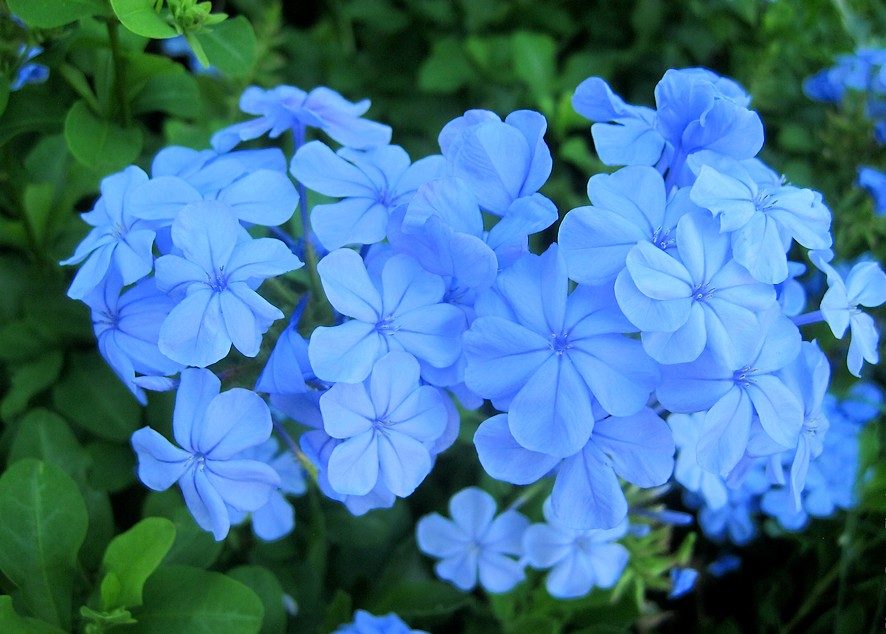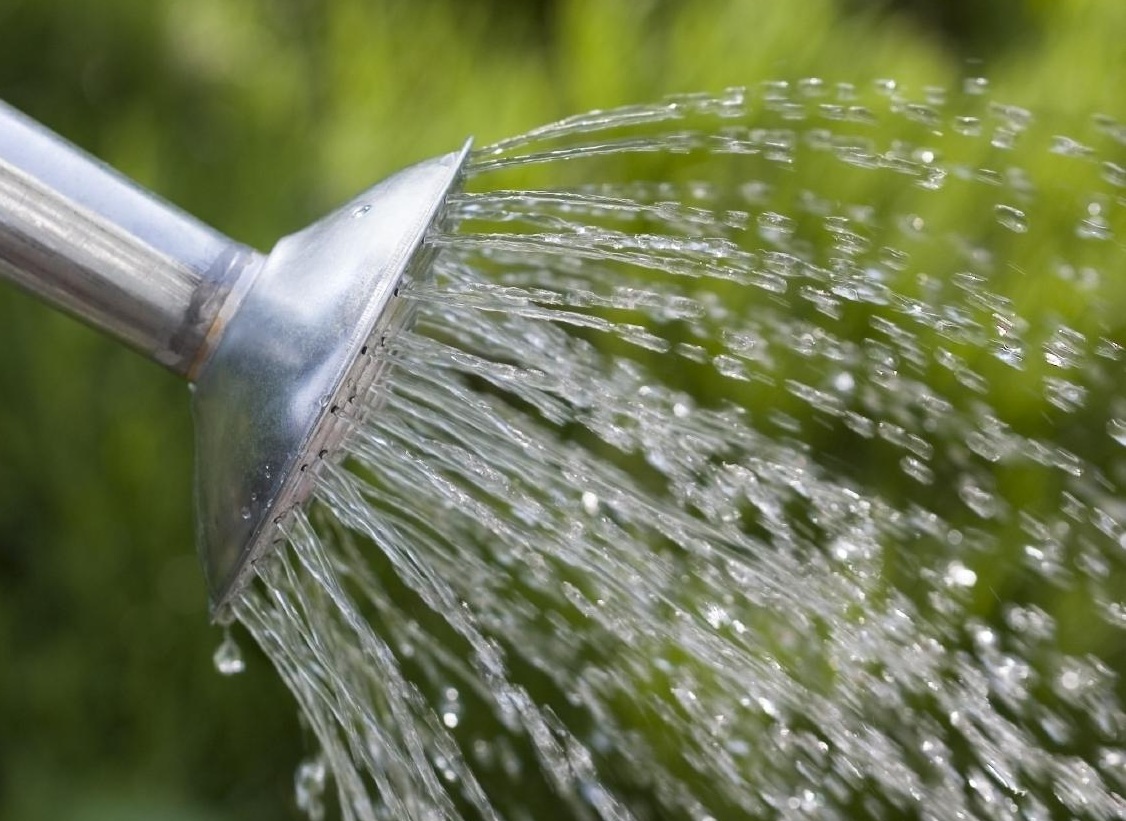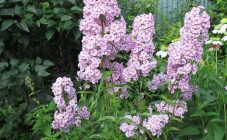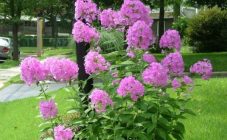Content:
These flowers are familiar to everyone. They are found in well-groomed flower beds and abandoned gardens, in designer-designed plots and in old front gardens. Phloxes combine all the properties that gardeners especially appreciate: delicate aroma, lush flowering, unpretentious cultivation.
Not all flower lovers like the color of phlox, many consider it rustic for modern flower beds. But only those who have never seen blue phlox think so. These flowers are worthy not only to get a modest place in a simple flower bed, but also to decorate the most original landscape.
History, geography, legends
An old legend says that Odysseus descended into the dark kingdom of Hades during his journey. Returning from there to our world, the hero threw his burning torch to the ground. But it did not go out, but turned into a beautiful flower, whose name in Greek means "flame".
In fact, this name, Phlox, was given to the plant by Karl Linnaeus in 1737. Phlox, oddly enough, have nothing to do with Greece. They were brought to Europe from America. A perennial species from Canada, an annual species from Texas.
Both species have taken root and spread throughout the European continent, due to their unpretentiousness. Among the many cultivated and wild-growing varieties of the flower there are inhabitants of desert plains, mountain gorges, forests, ravines, and, of course, gardens.
In most phlox species, the aerial part dies off in autumn (blue phlox also belong to these), but there are also evergreen varieties.
Plant characteristic
It is customary to classify phlox by height and structural features:
- tall (up to 180 cm) and undersized (up to 60 cm) bush;
- ground cover (creeping);
- loose sod.
The flowering periods of different species also differ:
- spring;
- summer;
- autumn.
Based on the totality of different species characteristics, phloxes are divided into 4 large groups:
- Drummond annuals.
- Spread out.
- Subulate.
- Paniculata.
The blue phlox cultivars in each of these groups have their own characteristics that can vary greatly.
Corollas of flowers consist of 5 folded petals, dissected, round, bowl-shaped or star-shaped, depending on the variety. The color can range from pure white to purple, with or without borders, stripes.
Most varieties of blue color are paniculate, one of the most decorative and unpretentious.
Blue phlox: varieties
Selection does not stand still, surprising gardeners with new varieties of their favorite flowers.
Among these are blue phlox:
- Fog... Panicled bush variety, up to 80 cm high. It keeps its shape well, does not "fall apart", despite the lush caps of the inflorescences. The color of the petals is bluish-lilac, with a raspberry ring.At dusk, the color looks like a pale blue. The petals are wavy. Phlox Fog takes root well, is resistant to fungal diseases and cold. The flowering period is medium early.
- Blue ocean. Shrub variety, up to 65 cm high. Grows rapidly, resistant to cold and disease. The flowers are violet-blue, in the shade they become blue. In the sun they can burn out, brighten.
- Night. Compact, resilient bush, up to 70 cm tall. It has an average resistance to disease, tolerates cold well. The petals of the flowers are slightly wavy, lilac, sometimes with a white eye. Looks like blue in the shade. Phlox Night can burn out from exposure to sunlight.
- Forget-me-not. Bush, about 70 cm high, compact. The flowers are abundant and look like forget-me-nots. During the day they are blue, in the evening they turn blue. Flowering period is average.
- Bird Sirin... Shrub up to 70 cm tall, viable, medium flowering. The color of the petals is purple during the day, with a white asterisk. At dusk it takes on a violet-blue tone. The flowers are abundant, star-shaped. Growing rapidly.
- Blue Paradise. The bush is high (up to 120 cm), spreading, viable. Dark stems, wavy petals. The color in the light is lilac, with a lilac ringlet and a slight highlight in the center. In the shade, the shade turns into blue-blue, with a deep blue ring.
- Fliederball. Bush up to 70 cm tall, grows quickly. Annual. Average flowering time. Phlox Fliederballe is resistant to fungal diseases. The inflorescences are large, dense. The color of the petals is lilac, bluish in the shade. It fades a little in the sun.
How to plant blue phlox
The most common way to plant phlox is by cuttings. You can buy them in specialized stores or on the market. When buying, you should pay attention to the appearance of the packaging, the condition of the roots and buds of the planting material. To buy a plant of a specific variety and of high quality, it is better to contact professional nurseries with a good reputation.
The time for planting can be chosen in spring, in April-May, or in autumn, in September-October. The main thing is to plant phlox so that they take root before frost.
The planting bed is opened, loosened, and cuttings are planted on it, with an interval of 30 cm. Tall varieties can be planted at a greater distance, up to half a meter.
Reproduction of blue phlox
A phlox bush already on the site can be propagated by layering. For this, a branch of the mother bush is bent to the ground and sprinkled with soil. You can make a hairpin out of the wire, which will additionally hold the branch until it takes root. When the cuttings give roots, they are separated and planted in a permanent place.
Another easy way to reproduce phlox is to divide the bush. To do this, an adult healthy bush is carefully dug up and divided into equal parts so that at least 1 strong full-fledged root remains on each. Then the resulting parts are seated in places. For this method, only bushes 4-5 years old are taken.
Both of the above methods can be practiced in the fall and even in the summer, but the most optimal time for reproduction and rooting of phlox is spring.
How to care for blue phlox
Blue phlox, like other varieties of this flower, are unpretentious. Caring for them will not be difficult.
- Lighting.
It is believed that these flowers love illuminated places. Therefore, many gardeners place them in the sun. This is not entirely correct. So that the blue phloxes do not lose their color saturation, they must be shaded, or planted in partial shade.
- The soil.
Phloxes love nutrient-rich soil that is neutral or slightly acidic. It is desirable that it be light, sandy loam.
- Watering.
Blue phlox are moisture-loving, you need to water them often in the hot season. But at the same time it is very important that the water does not stagnate in the ground. The plant does not tolerate excess dampness, it can get sick with powdery mildew or other fungal disease.
- Top dressing.
The first feeding is carried out in the spring. Nitrogen-containing or complex fertilizers should be used. This will help the bush develop as quickly as possible.
For the second feeding, phosphorus-potassium fertilizers are used. They are brought in during the formation of buds for more lush flowering.
After flowering, phloxes are again fed with phosphorus-potassium fertilizers, without nitrogen.
Diseases and pests
Diseases:
- Variegated (mosaic). It appears as spots on the petals. Changes color, destroying varietal color. Transmitted by pests. At the initial stages, it does not reveal itself to anything. It is destroyed by burning diseased plants.
- Fomoz... A fungal disease that causes browning of the leaves and lower part of the stem. As a prophylaxis, plants are sprayed with Bordeaux liquid during budding and flowering. For the winter, the aboveground part is cut off and burned. Fomoz is not amenable to treatment, the only possible measure is the destruction of the bush.
- Powdery mildew... The appearance of white mold spots on the leaves is caused by a fungus. It is often the result of excessive moisture. As a preventive measure, spraying with copper-containing preparations, such as Bordeaux liquid, is suitable.
The main pest of phlox is a nematode. A microscopic worm that lives in plant tissues and feeds on their sap. Damaged shoots become brittle, leaves become swollen and deformed. The plant stops growing and dies. The affected bush is difficult to save, the most effective measure would be to remove it from the site and burn it, and plant marigolds in its place of growth.
But if the variety is valuable, you can try to get rid of the nematodes. To do this, the most affected shoots are removed from the bush and left to grow until next year. In the spring, young, healthy-looking shoots are broken out, washed with running water and planted in a new place under a shelter. The old bush is destroyed along with the root.
Blue phloxes are perhaps the most unusual of their kind. Changing their shade like chameleons, they will delight the owners with lush flowering, looking very original among other flowers. Old acquaintances, such frequent guests in the front gardens of our grandmothers, phloxes do not lose their attractiveness and remain in demand even among sophisticated gardeners.















